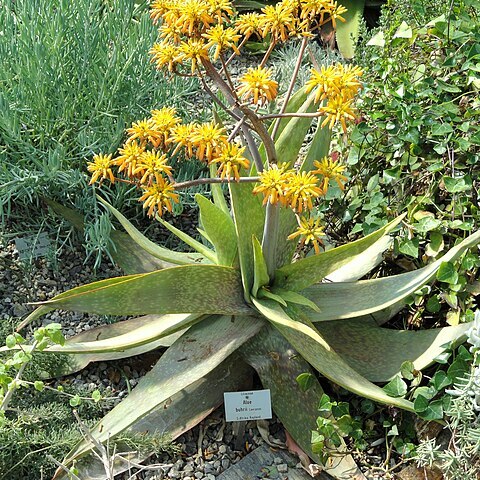Plants stemless, ±300 mm tall excluding inflorescence, forming small groups. Leaves ±16, arcuate-erect to spreading, 200-400 x 40-90 mm, spotted, margins horny, pale red, minutely denticulate. Inflorescence a panicle up to 600 mm tall; racemes dense, subcapitate; bracts deltoid-acute, 5-10 x 2-4 mm, 3-5-nerved. Flowers orange-red, 16-25 mm long; outer segments free for 4-7 mm, inner segments adnate to outer; pedicels 9-25 mm long. Anthers exserted 1-3 mm. Ovary 4.0-5.0 x 2.0-2.5 mm, pale green; style exserted 3-6 mm. Fruit not seen.
Acaulescent, succulent perennial, sometimes suckering to form dense colonies. Leaves yellow-green to glaucous-green with reddish tinge, distinctly striate, with irregular, white, H-shaped spots, lanceolate-deltoid, to 40 cm long; margins reddish, smooth to minutely small-toothed. Racemes subcapitate, lax, with spreading branches, to 60 cm long. Flowers orange-red or rarely yellow, green-tipped in bud, 25-27 mm long; stamens and stigma exserted.
Acaulescent, up to 300 mm tall, forming dense clumps. Leaves yellow-green to glaucous green, erect, with distinct H-shaped spots, margins reddish, smooth to minutely toothed. Flowers in branched, sparse, capitate, rounded panicles, nodding, orange-red or rarely yellow.

